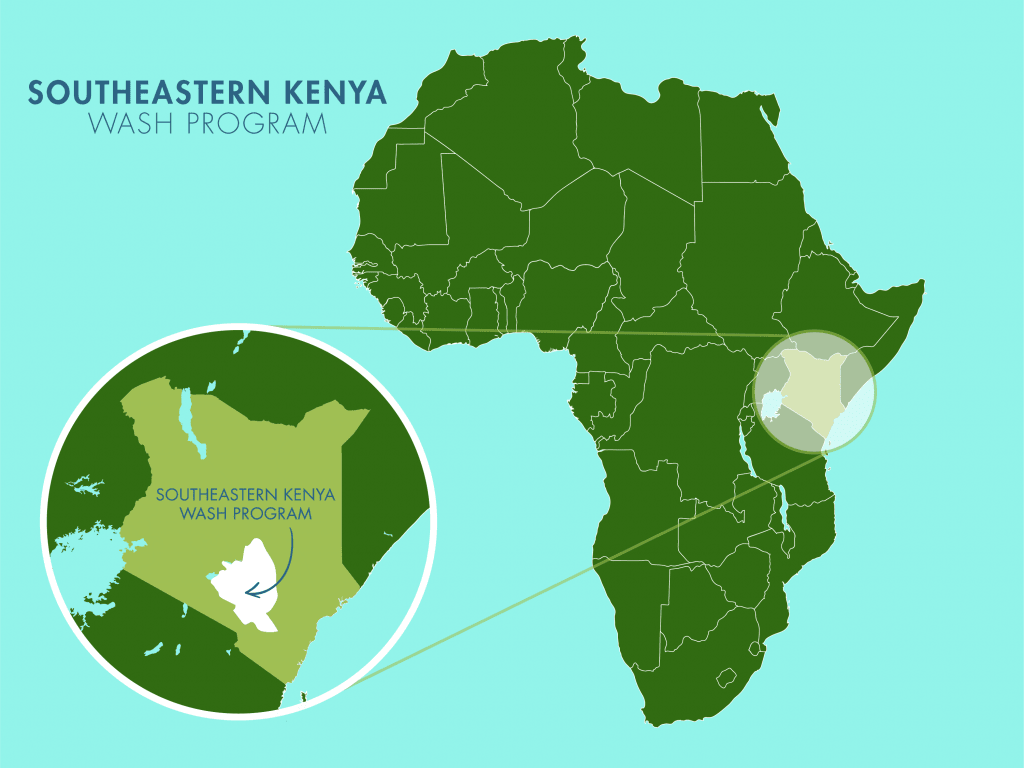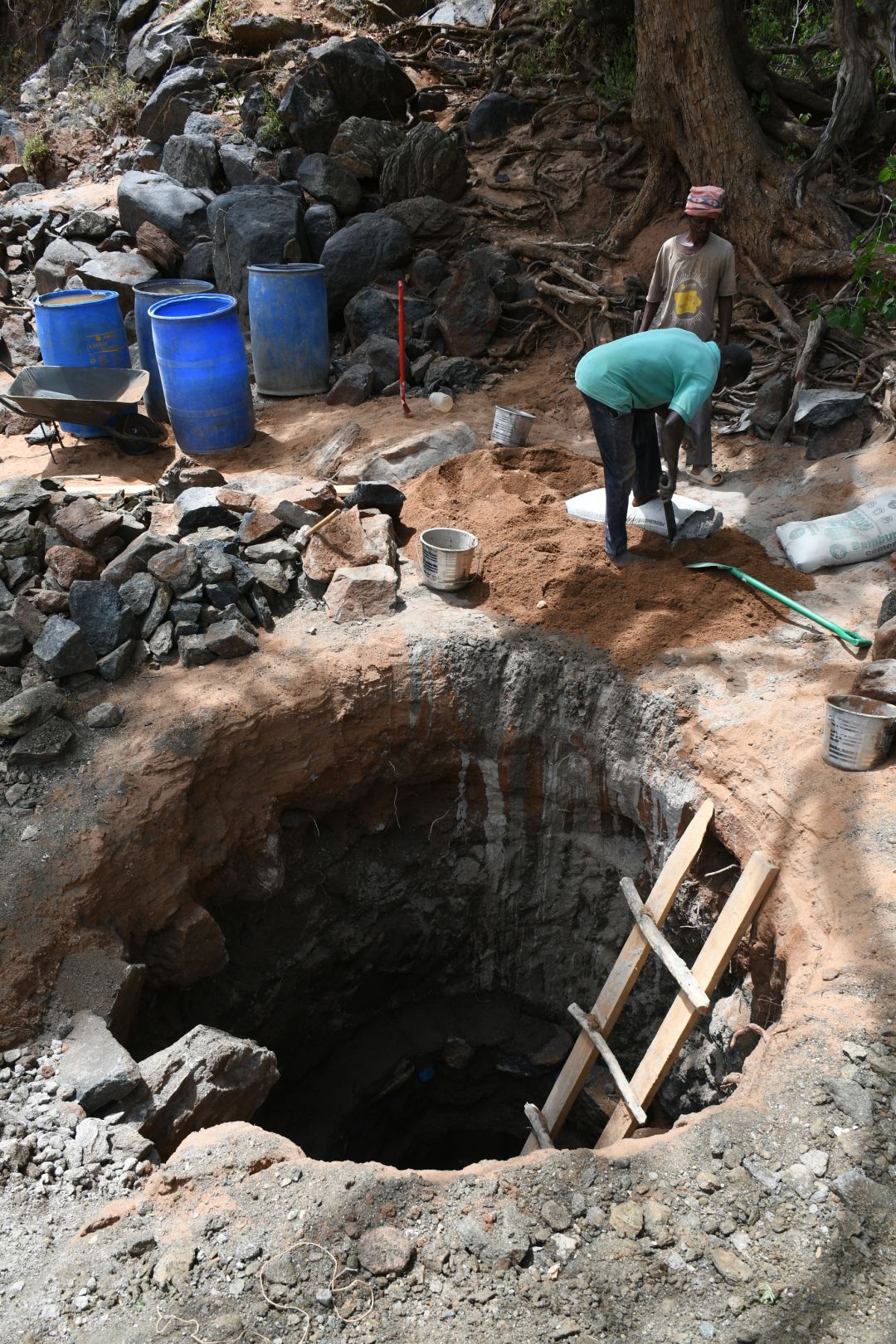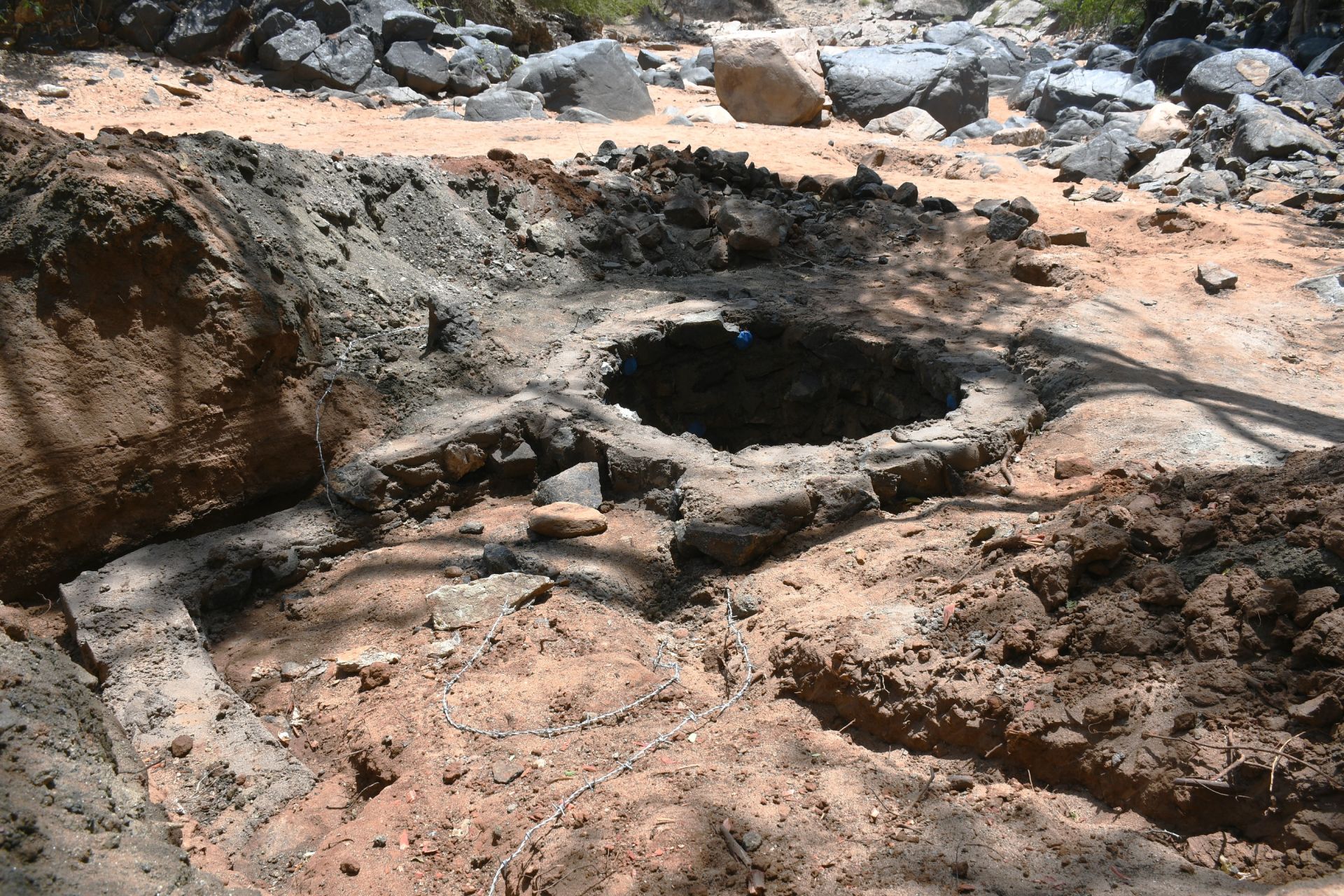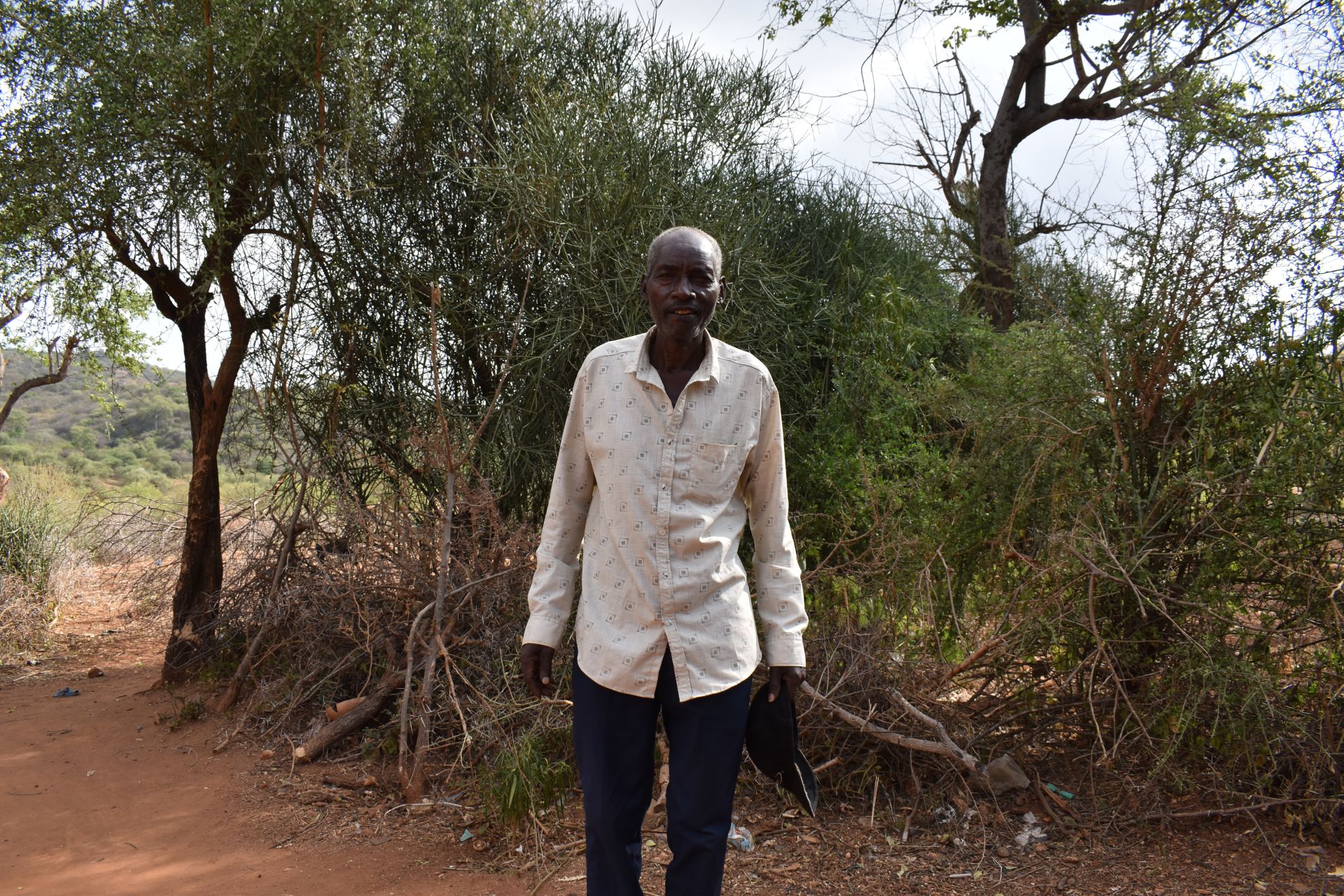The Makulini Community has 500 members who have to scrounge for water every day. Their water sources are far away and often unsafe. They most often use a scoop hole, dug into a sandy riverbed, to find water.

The scoop hole.
Field Officer Alex Koech said, "Makulini members are drawn from Ngombeni and Kalamba villages; the area is a dry rural location with [an] average vegetation cover made of predominantly indigenous tree species. The roads in the locality are dry weather roads penetrating the steep slopes leading to the community group. Most of the region is bare, dusty, and rocky."

An attempt to protect the scoop hole from further contamination by animals.
"Water is life; without water, my cattle and goats will succumb to the adverse drought. It is also difficult to get any output from our farms when we do not have water to irrigate our crops," shared 75-year-old farmer Moses Ngonde.

Moses Ngonde.
Moses relies on water for his livelihood to thrive, but every day he has to make the difficult journey, a walk that gets harder every day. To make matters worse, the water they work so hard for makes them sick. They often suffer from water-related illnesses like typhoid and cholera.
We can only fetch water twice or once a day because we have to walk far to draw water. The water from the scoop holes is also shared with the animals, who often excrete near or inside the water source, which causes waterborne infections. The footpaths are also rocky with thick thorny bushes that harbor wild animals like snakes," he shared.

Moses surrenders so much of his time that he isn't able to care for his farm and livestock as much as he would like. His family suffers when he can't produce enough to provide for them. Water scarcity isn't just a water issue; it impacts every single aspect of his life.
With easy access to clean water, Moses can tend his farm and provide for his family. He won't have to make the long, difficult journey and can consume water without fear of falling ill.
"The new water point will ensure we have a nearby source of clean water, and my family will no longer be exposed to dangers from wild animals like snakes. We will also be drinking clean water, which eliminates the risk of water-related infections like typhoid and amoeba," he said.

"The shallow well will be protected and feature a hand pump which enables easy access to clean water in the area. Additionally, this will curb both animal and human contamination in the scoop holes. The shallow well will also be located in a central point of the village, which eradicates the long walks to the scoop hole and previous water project, making it safe for everyone to get there," concluded Alex.
Solving the water crisis in this community will require a multifaceted system that will work together to create a sustainable water source that will serve this community for years to come.
Note: Our proposed water point can only serve 300 people per day. We are working with the community to identify other water solutions that will ensure everyone has access to safe and reliable drinking water.
Steps Toward a Solution
Our technical experts worked with the local community to identify the most effective solution to their water crisis. Together, they decided to construct a dug well and sand dam.
Dug Well Near A Sand Dam
Once a sand dam is installed and has time to mature by gathering sand and silt, groundwater increases significantly in the entire area surrounding the project. This provides a reliable source of groundwater that wasn’t possible before. As a result, wells can be constructed to take advantage of the water stored and filtered in the collected sand.
During construction, we build a platform for the well and attach a hand pump. The community gains a safe, enclosed water source capable of providing approximately five gallons of water per minute.
This dug-well will be connected to a sand dam to obtain water.
Community Education & Ownership
Hygiene and sanitation training are integral to our water projects. Training is tailored to each community's specific needs and includes key topics such as proper water handling, improved hygiene practices, disease transmission prevention, and care of the new water point. Safe water and improved hygiene habits foster a healthier future for everyone in the community. Encouraged and supported by the guidance of our team, a water user committee representative of the community's diverse members assumes responsibility for maintaining the water point, often gathering fees to ensure its upkeep.

 Protected Dug Well
Protected Dug Well
 Rehabilitation Project
Rehabilitation Project





























